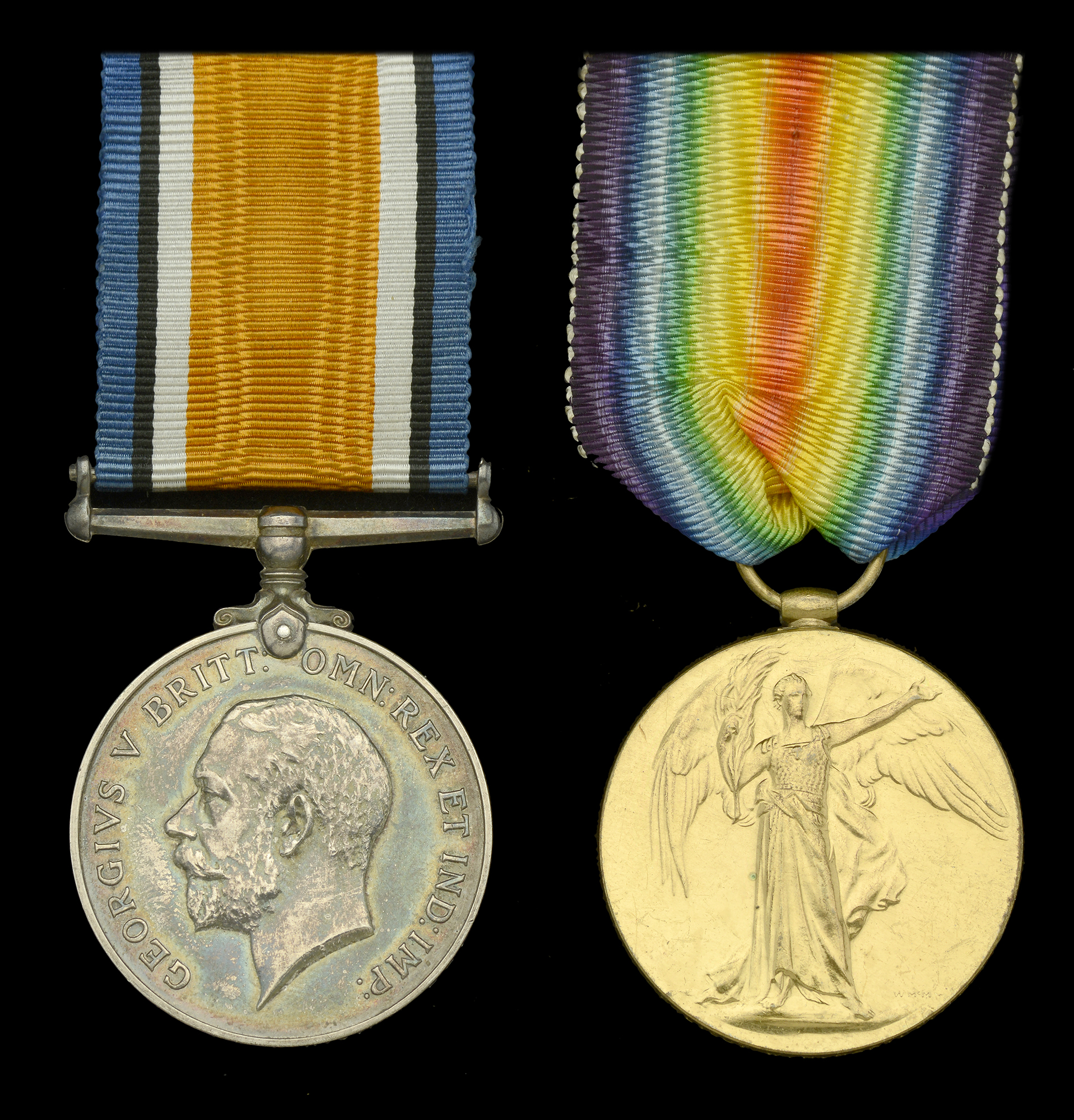A Great War ‘casualty’ pair awarded to DH.9 observer, Second Lieutenant W. N. Hartley, 49 Squadron Royal Air Force, an 18-year-old who managed to account for three enemy aircraft forced down out of control over the Western Front, prior to becoming the 33rd ‘victory’ of Oberleutnant Lothar Freiherr von Richthofen during the first day of the Battle of Amiens on 8 August 1918 British War and Victory Medals (2/Lieut. W. N. Hartley. R.A.F.) good very fine (2) £400-£500 --- Walter Noel Hartley was born in Liverpool in December 1899. He was the son of an auctioneer at Hartely & Co. Walter Hartley was educated at the Liverpool Collegiate School, and enlisted in the Royal Flying Corps as soon as he turned 18. He was accepted for officer cadet training in December 1917, and was commissioned Temporary Second Lieutenant in the Royal Air Force in May 1918. Hartley was posted for operational flying as an Observer with 49 Squadron (DH.9’s) in France on 6 June 1918. Four days later he flew his first operational sortie, a bombing raid on Piennes, crewed with Lieutenant E. D. Asbury as his pilot. This was to prove an eventful first outing, as they, plus the other aircraft that they were flying with, were attacked by 10 enemy aircraft. The combat report provides further detail: ‘We were attacked by ten E.A., five attacking each machine. Pilot [Astbury] engaged one with Vickers, firing short bursts, and one E.A. went down in a vertical nose-dive completely out of control. The Observer [Hartley] fired another burst into another E.A. at short range. The machine went down in a spin out of control turning on to its back, and was followed down close to the ground still out of control. Being attacked by the remaining E.A. it was impossible to observe the actual crashes. During combat an E.A. engaged by the other DH.9 was seen to go down in flames. I consider these machines were driven down out of control.’ This pair carried out a number of bombing raids together throughout the remainder of the month, and they chose to go on the offensive on 29 June 1918: ‘After dropping bombs on objective, formation turned Eastward. About two miles West of Lille several E.A. passed under formation. Pilot [Astbury] dived and fired a burst into an E.A. with Vickers Gun, and then observer [Hartley] fired a long burst into E.A. and after an interval of 15 seconds volumes of white smoke issued from E.A. which turned over and went down completely out of control. Observer watched it go down about 8,000 ft. at the end of which it appeared to be one mass of smoke. 2/Lt. Simpson saw this machine go down completely out of control.’ (Combat Report refers) A similar pattern emerged for the pair throughout July, and they were in combat again whilst on a raid to Mont Notre Dame on 25 July 1918: ‘The formation was attacked by about 15 E.A. 2 E.A. flew past formation to the West of the machine. The Observer [Hartley] fired several small bursts into the E.A. which went down in a spin and appeared to go down out of control. The Observer was unable to follow it down owing to being attacked by several other other E.A. 2/Lt. Scott, Observer, saw this E.A. spin down but did not see it crash.’ (Combat Report refers) August heralded a change of pilots, and Hartley found himself crewed with four different pilots over the course of the first eight days. Combining two forced landings and a engine failure, his luck was to completely run out when finally combined with Lieutenant George Strachan Ramsay as his pilot. The latter being a noted pre-War Scottish footballer, who had turned out for Queen’s Park Rangers, Partick Thistle and Carlisle United. Hartley and Ramsay carried out a bombing raid during the first day of the Battle of Amiens on 8 August 1918. On their return from Béthencourt Bridge they had the misfortune to pass near the Ennemain Airfield, where the infamous Jasta 11 were based. German fighters immediately took off and gave chase. Hartley and Ramsay were engaged, and shot down in flames by Oberleutnant Lothar Freiherr von Richthofen - the younger brother of the ‘Red Baron.’ The were to become his 33rd ‘victory’, and they are both commemorated on the Arras Flying Service Memorial. Sold with extensive copied research.
Auctioneer's Buyers Premium: 24% (+VAT)
There is an additional charge of 4.95% (+VAT/sales tax)
See Full Terms And Conditions





